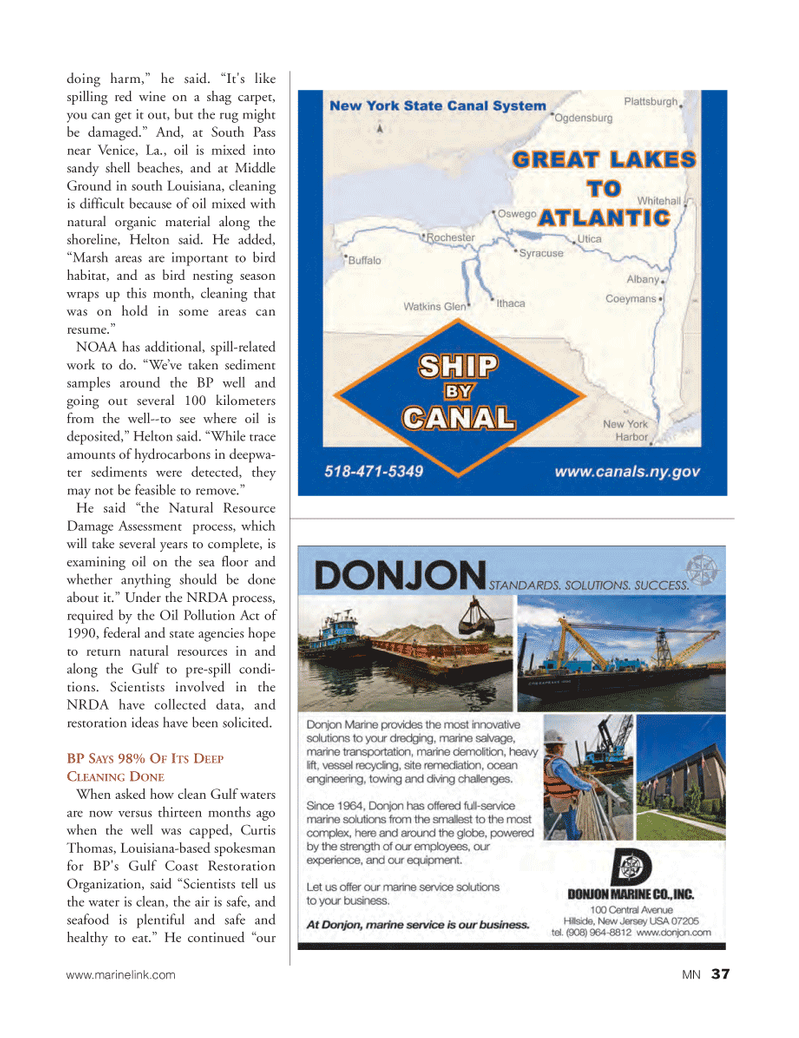
Page 37: of Marine News Magazine (September 2011)
The Environmental Edition
Read this page in Pdf, Flash or Html5 edition of September 2011 Marine News Magazine
www.marinelink.com MN37doing harm,? he said. ?It's like spilling red wine on a shag carpet, you can get it out, but the rug might be damaged.? And, at South Pass near Venice, La., oil is mixed into sandy shell beaches, and at Middle Ground in south Louisiana, cleaning is difficult because of oil mixed with natural organic material along theshoreline, Helton said. He added, ?Marsh areas are important to bird habitat, and as bird nesting season wraps up this month, cleaning thatwas on hold in some areas can resume.? NOAA has additional, spill-related work to do. ?We?ve taken sediment samples around the BP well and going out several 100 kilometers from the well--to see where oil is deposited,? Helton said. ?While trace amounts of hydrocarbons in deepwa- ter sediments were detected, they may not be feasible to remove.? He said ?the Natural Resource Damage Assessment process, which will take several years to complete, is examining oil on the sea floor andwhether anything should be doneabout it.? Under the NRDA process, required by the Oil Pollution Act of 1990, federal and state agencies hopeto return natural resources in and along the Gulf to pre-spill condi- tions. Scientists involved in the NRDA have collected data, and restoration ideas have been solicited. BP SAYS 98% OFITSDEEPCLEANINGDONEWhen asked how clean Gulf waters are now versus thirteen months ago when the well was capped, Curtis Thomas, Louisiana-based spokesmanfor BP's Gulf Coast Restoration Organization, said ?Scientists tell us the water is clean, the air is safe, andseafood is plentiful and safe andhealthy to eat.? He continued ?our MN#9 (32-49):MN 2011 Layouts 9/6/2011 12:20 PM Page 37

 36
36

 38
38
